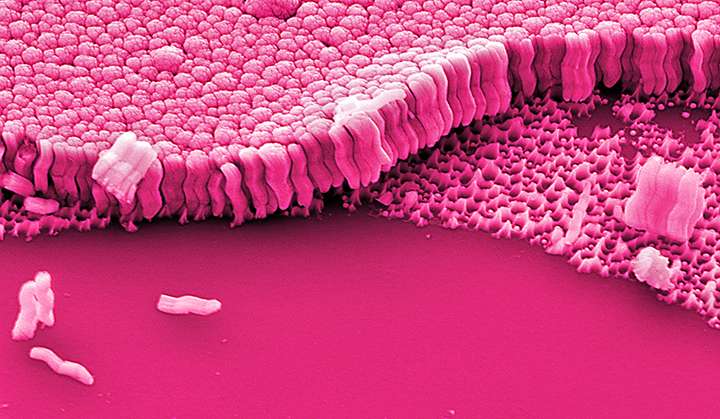Expanding the reach of metallic glass

Metallic glass, a class of materials that offers both pliability and strength, is poised for a friendly takeover of the chemical landscape.
Yale University engineers have found a unique method for designing metallic glass nanostructures across a wide range of chemicals. The process will enable the fabrication of an array of new materials, with applications for everything from fuel cells to biological implants.
"It's a huge step for nanofabrication," said Jan Schroers, professor of mechanical engineering and materials science at Yale, and co-author of a paper published online this week in the journal Nature Communications. "You really now have the entire toolbox to change how you make these glasses for other chemistries."
Schroers and his team at Yale have spent years refining processes for designing metallic glass nanostructures—complex, multicomponent alloys that are constructed at the nano scale—within a limited number of alloy systems. Those materials can be molded much like plastic and already are being used in a variety of manufacturing applications, from watch parts to phone casings.
In the new paper, Schroers demonstrates a method for applying metallic glass nanostructures to a broad range of glass-forming alloys. The process involves depositing the material into the mold in vapor form, resulting in the ability to control the size, shape, and composition of alloys at the nanoscale.
"Controlling size and reaching the smallest ~10 nanometer dimensions—1/10,000 of the diameter of a human hair—is something that we have demonstrated before," Schroers said. "However, we could only do this for one, very specific chemistry. With our new method we can fabricate nanostructures similar in size but with even higher complexity in shape and realize all this in a very wide range of alloys."
Expanding the chemistries of metallic glass also expands the possible uses for the materials, he notes. Manufacturers will be able to optimize the design to a desired electrochemical behavior for a battery or fuel cell, for example. Or they might alter materials for greater biocompatibility, temperature stability, or water resistance.
"This is like going from building boats only out of wood, to the ability to build boats out of almost any kind of material," Schroers said.
Journal information: Nature Communications
Provided by Yale University



















